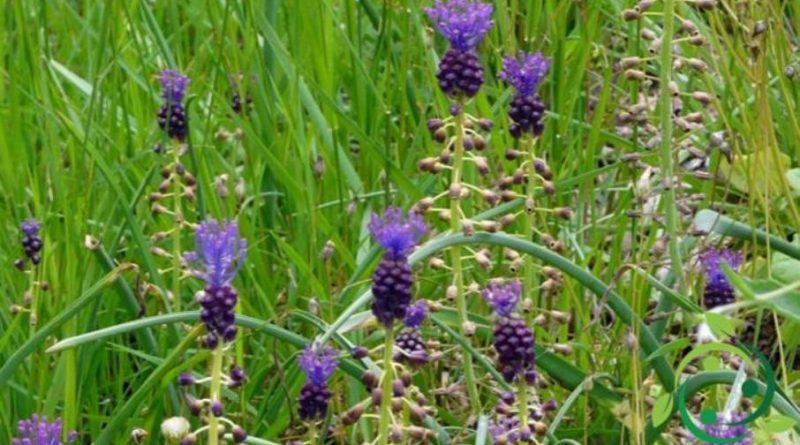How to grow Lampascioni
How to grow Lampascioni
Lampascione or lampagione, also known as canine onion, cipollaccia, onion with the bow or hyacinth with plume (Muscari comosum (L.) Mill., 1768), is a herbaceous species of the family Liliaceae, widespread in the Mediterranean regions. The flowers of this plant bloom in spring and are persistent until summer, while the globular bulb of this plant is rich in mineral salts, grows to about 12-20 cm in the subsoil and is similar to a small onion with a bitterish taste. Lampascioni are consumed mainly in Basilicata and Puglia. In this sheet we see how to grow the Lampascioni, which are certainly among the bulbous plants that are easier to grow, also because some species are also widespread in the wild in Italy; they are placed in a good soil, not particularly rich, but very well drained. The bulbs are small in size, and they are buried for a few centimeters, spacing them at least 4-5 centimeters between them. The best effect is obtained by placing the muscari in spots.
They prefer sunny locations, they can also find a place in the shade, remembering that less sun receives and less flowers will produce from year to year.
These are rustic bulbous plants, which tolerate winter cold and summer heat without any problems, and therefore can stay in the garden year after year, also because they do not occupy much space, and can be buried among other plants. Over the years they tend to grow wild, increasing in number, but often continuing to produce flowers every year, without loss of flourishing or morphological characters.
They are planted in autumn, after having worked well on the ground and have enriched it with little manure; water the soil and compact with the back of the spade; then the bulbs are left on the ground until the following year. At the end of winter they will begin to bloom; during the spring months need watering only if the soil dries, because usually the flowering period coincides with a cool and humid climate. Only in case of drought it will be necessary to intervene with not excessively abundant waterings. Over the years, the muscari, living in the open ground, tend not to require any treatment, and they bloom again every year.
With the arrival of summer heat the foliage dries up, and the bulbs enter vegetative rest until the autumn.
If you want in the summer it is possible to extract the small bulbs from the ground, to plant other plants in their place; they are preserved, after having dried them in the sun, in a cool, dark and dry place, until the end of the summer, when it is preferable to put them back to the home.
These bulbous plants are small in size and generally do not exceed 20-25 cm in height; if you want it is possible to grow them in pots, but remember that the earth bread contained in a small pot can completely dry out, due to the sun or the wind. So even when spring is normally rainy it may be necessary to water our potted muscars.
It is also advisable to provide fertilizer for flowering plants to our pot bulbs, and they will be watered until the foliage naturally starts to dry out. At this point we suspend the waterings and when the soil is completely dry we can extract the bulbs from the ground to store them until the following autumn.
The small bulbs are extracted from the ground, deprived of the outer tunic, as if they were onions, and then left in water for at least an hour, as they contain a very bitter latex.
Later they are cooked stewed, or boiled in water and vinegar to be preserved in oil, often flavored with thyme and pepper.
The lampascioni have a particular taste, initially bitter, then sweet and pleasant.

